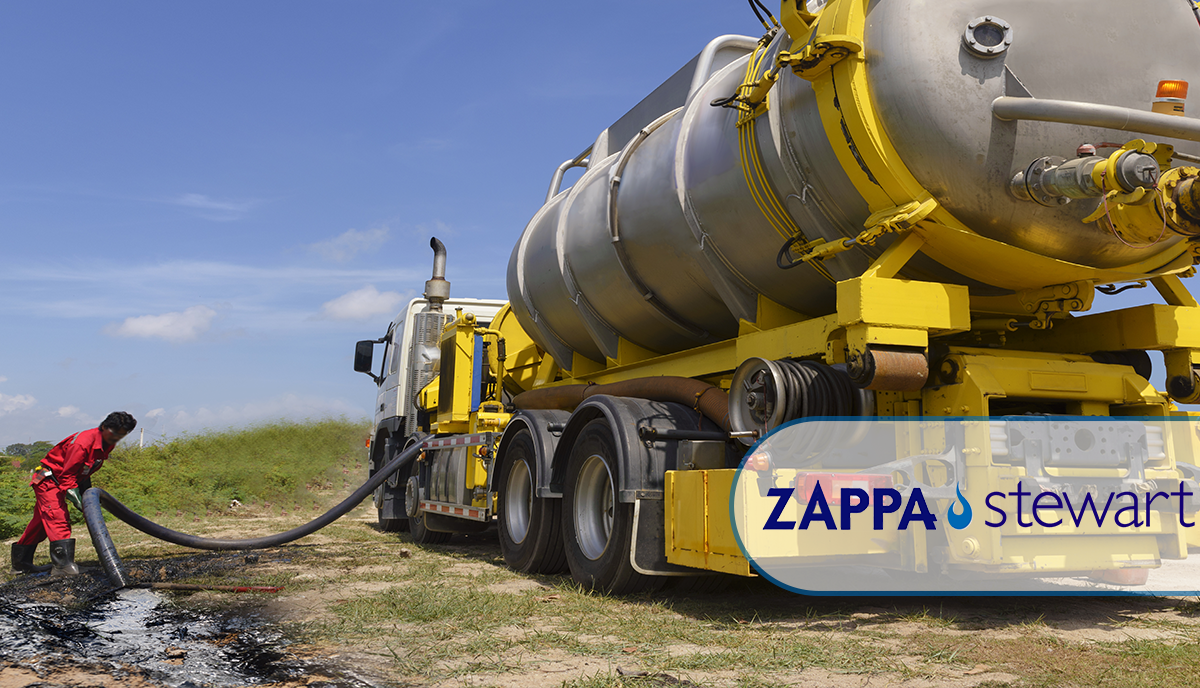
The rapid increase in horizontal directional drilling (HDD) activities throughout North America has resulted in a higher demand for vacuum truck services to manage liquid waste streams. And while drilling contractors and pipeline maintenance crews often rely on the convenience and efficiency of hiring a vacuum truck to get liquid waste out of their way, the next step in the process, liquid waste solidification, is often not as efficient or cost effective as it could be. Low-end commodity absorbents, like those that are widely used in the waste treatment industry, present several challenges to environmental contractors. Fortunately, superabsorbent polymers (SAPs) offer a safe, efficient, and cost-effective solution to liquid waste solidification.
Liquid waste can be solidified or “dried” with many different types of materials and reagents. The vast majority of materials that are used for this purpose are commodity materials such as sawdust, cement, “auto fluff” and other waste materials from various manufacturing processes. Commodity materials typically have two features: They’re cheap and they’re inefficient.
Cheap is attractive on the front end of a process, but inefficient materials require large quantities to solidify a waste stream, resulting in excessive transportation and disposal costs. It’s important to remember that every pound of cement or sawdust that is mixed into a waste stream adds costly weight to the waste that the landfill will charge for. Cement is often applied at dosage rates of 10%-25% (by weight). If you have 100 tons of liquid waste, you have to apply 10-25 tons of cement to solidify the mass. If landfill tipping fees in your region are $70 per ton, that’s an extra $700-$1,750 of disposal costs for that load.
Sawdust is often applied at 100%-200% (by volume). If you use sawdust to “dry up” the same waste quantity, you likely will need to apply 25-50 tons to the waste to pass paint filter, or an extra $1,750-$3,500 in disposal costs.
In contrast, SAPs are applied at 0.5%-1.5% (by weight). The same 100 tons of liquid would require only 0.5 – 1.5 tons of SAPs to fully solidify the liquid and allow the waste to be disposed at a landfill, resulting in only $35-$105 in disposal costs associated with the treatment amendment.
The following link takes you to a convenient cost comparison calculator that allows you to adjust the inputs as needed so you can see for yourself how SAPs can reduce liquid waste disposal costs.
In addition to cost inefficiencies, portland cement presents its own unique set of risks that should be considered when applying it in the field. Cement is well known to be corrosive to skin, eyes, and lungs. When mixing and applying cement, skin should always be totally covered, and it is advisable to use a full-face respirator to avoid inhaling cement dust.
Furthermore, portland cement contains trace amounts of hexavalent chromium [Cr (VI)], a known skin irritant, carcinogen, and environmental contaminant. As a component of a solidified waste matrix, hexavalent chromium that is placed in a landfill will likely come in contact with landfill leachate and eventually pose an environmental risk as a groundwater contaminant that can impact drinking water and surface water bodies. It’s a good practice to keep hexavalent chromium out of the environment.
If SAPs are part of your plan to increase waste treatment operational efficiencies, it is important to ensure that your operations team understands that SAPs are intended to be applied in a controlled manner. SAPs are an engineered technology designed to solidify liquid waste with maximum efficiency and are therefore usually priced higher on a unit basis than commodities like cement and sawdust -- products that are often applied with little control. Careless application of SAPs can result in overdosing, which is not a problem from a technical perspective, but can lead to unnecessary reagent costs.
Vacuum truck services and waste solidification are important services to many critical industrial and consumer sectors that will likely increase in use in the future. Maximizing the efficiency of the waste treatment process is critical for waste treatment companies to remain competitive in a crowded market. Minimizing health safety hazards, environmental risks, and quantities of waste placed in landfills are issues that are important to society in general. Safe and efficient superabsorbent polymers are designed to help with all of these factors.
Contact us for more information.





